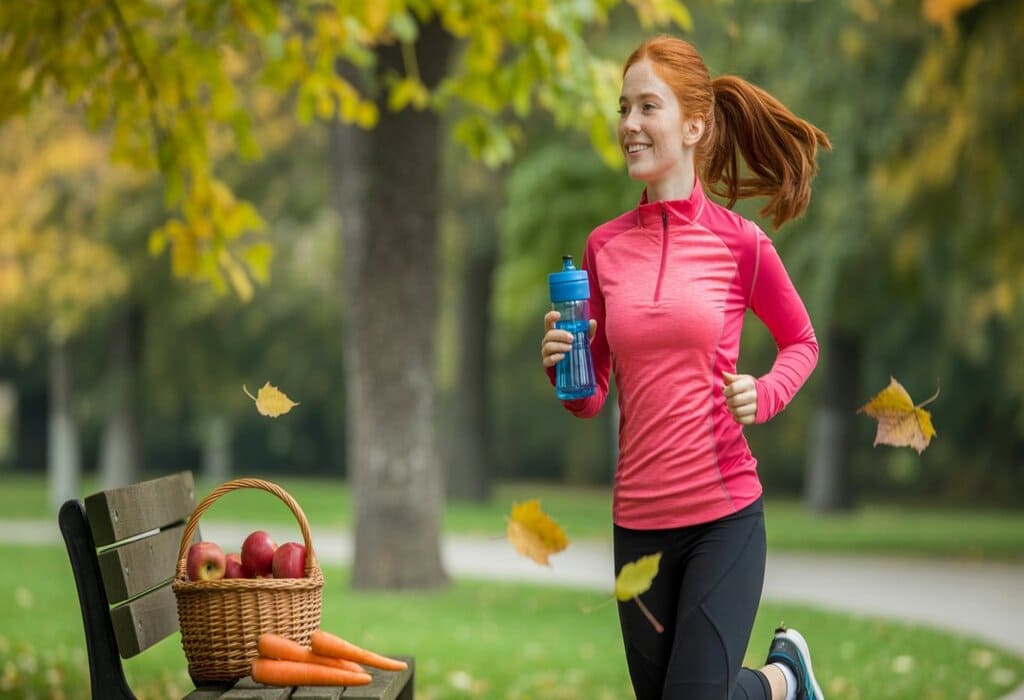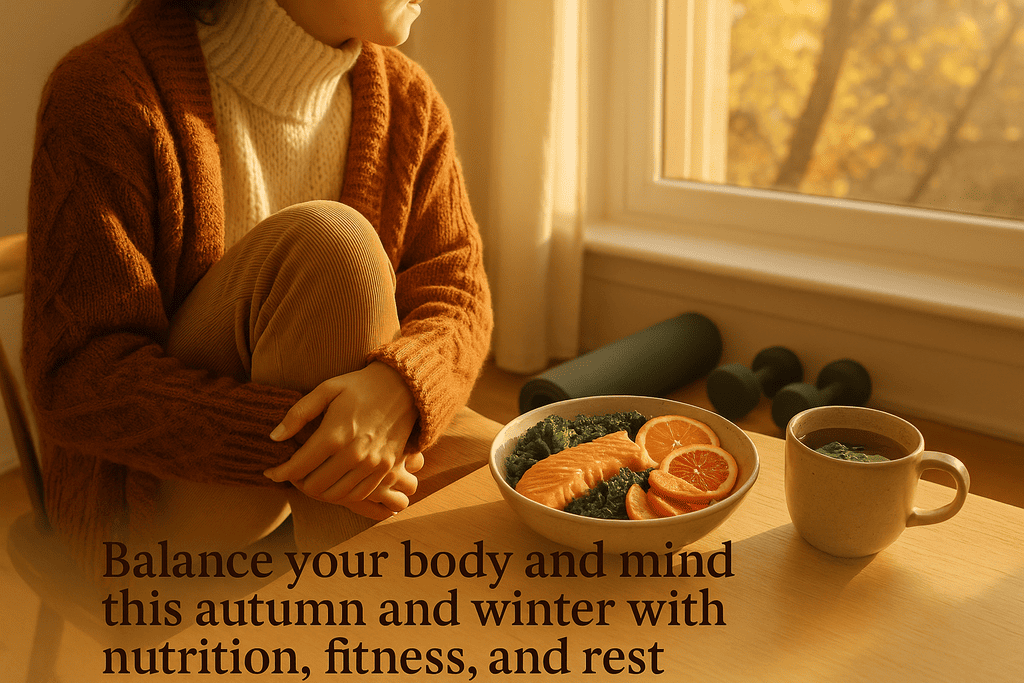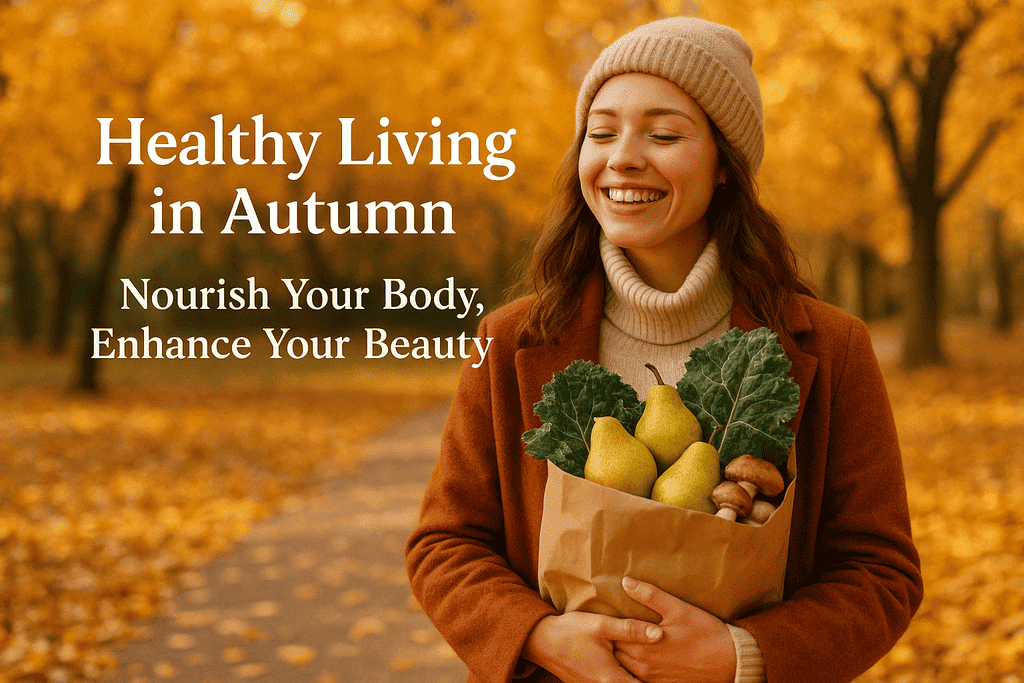
Introduction
Seasonal transitions — from summer to autumn, or autumn to winter — bring pleasant changes in scenery and wardrobe, but they also bring a spike in respiratory infections such as the common cold and influenza (flu). As people spend more time indoors and environmental conditions (temperature, humidity) change, viruses that cause colds and flu spread more easily. This guide gives practical, evidence-based, and SEO-friendly advice to help you prevent colds and flu, protect vulnerable family members, and keep your productivity and wellbeing intact through seasonal change.
What you’ll learn in this article: practical prevention strategies, the role of vaccination, personal hygiene and masks, indoor air and humidity management, nutrition and supplements, when to seek medical care, and a short, printable checklist. The recommendations below are based on recent scientific reviews and guidance from major public-health authorities in North America, Europe, and Asia. PMC+2CDC+2

Body
1. The single most important prevention step: Vaccination
Getting the seasonal influenza vaccine every year is the most effective single preventive measure for reducing severe flu, hospitalizations, and deaths. Public-health authorities such as the U.S. Centers for Disease Control and Prevention (CDC) and advisory immunization committees update vaccine composition each year to match circulating strains and recommend annual immunization for most people (usually starting at 6 months of age). Vaccination is especially important for older adults, pregnant people, infants, and those with chronic medical conditions. PMC+1
Why it matters: influenza can cause severe complications even in otherwise healthy people; vaccines reduce severity and community spread.
2. Basic personal hygiene : Handwashing and respiratory etiquette
Regular and effective hand hygiene (soap and water for at least 20 seconds, or alcohol-based sanitizer when handwashing isn’t possible) reduces the chance of picking up viruses from surfaces and transferring them to your mouth, nose, or eyes. Systematic reviews and meta-analyses show that hand hygiene interventions in the community modestly reduce respiratory infections. Cover your mouth and nose with a tissue or your elbow when coughing or sneezing, and dispose of tissues immediately. Stay home if you are sick to limit spread. PMC+2Cochrane Library+2
3. Masks and source control : use when risk is higher
Well-fitted masks (surgical masks or respirators where indicated) reduce emission of respiratory droplets and aerosols from infected people and can lower exposure for others. Evidence from recent reviews suggests masks provide protection when used correctly and consistently — especially in high-risk settings (crowds, public transport, healthcare settings) or when local virus activity is high. For routine low-risk daily activities the benefit is smaller, but masks are a smart, low-cost option when you or someone you live with is vulnerable. The Lancet+1
4. Indoor air : ventilation and humidity matter
Viruses transmit more easily in poorly ventilated spaces. Improving ventilation (open windows, use mechanical ventilation, or portable HEPA air filters) reduces the concentration of infectious aerosols indoors. Relative humidity matters too: very dry indoor air can damage nasal and airway defenses and may increase virus survival; moderate humidity (often cited in the 40–60% range) tends to be easier on the airways and less favorable for many viruses — though exact effects vary by virus and environment. Practical steps include short periods of window opening, using air cleaners with HEPA filters in busy rooms, and avoiding extremely dry indoor air during winter heating. ScienceDirect+2ScienceDirect+2
5. Nutrition, sleep, and exercise : non-specific immune support
A balanced diet rich in fruits and vegetables, adequate sleep, regular moderate exercise, and stress management support general immune resilience. Specific nutrients that have been studied for respiratory infection prevention include vitamin D, vitamin C, and zinc. Evidence for vitamin D is mixed but promising: meta-analyses show a modest protective effect of daily vitamin D supplementation against acute respiratory infections, particularly in people who are deficient. This suggests checking vitamin D status and correcting deficiency (under clinician guidance) can be a reasonable seasonal strategy. PubMed+2BioMed Central+2
6. Supplements and evidence-based use
- Vitamin D: Several randomized controlled trials and meta-analyses indicate daily or regular moderate vitamin D supplementation can reduce risk of acute respiratory infections in some groups, particularly those with low baseline levels. Discuss with your healthcare provider before starting supplements. PubMed+1
- Vitamin C and zinc: Trials show some benefits in reducing duration or severity of colds in certain contexts; evidence is heterogeneous.
- Probiotics: Some studies suggest modest reductions in upper respiratory infection incidence, but more high-quality trials are needed.
7. Practical measures for households and workplaces
- Stay home when symptomatic and test if testing is recommended locally; follow isolation guidance for influenza or COVID-19 when appropriate. SST Administration
- Clean high-touch surfaces periodically during high-transmission seasons (door knobs, remotes, light switches).
- Use masks in crowded indoor spaces during peak season or if someone in your household is high-risk. PMC
- Workplace policies that encourage sick employees to stay home reduce outbreaks and preserve workforce capacity.
8. When to seek medical care
Seek medical attention if you or a family member experiences: difficulty breathing, persistent high fever, confusion, chest pain, dehydration, or symptoms that rapidly worsen. Older adults, infants, pregnant people, and those with chronic illnesses should contact a clinician early if symptoms appear because these groups are at higher risk of complications.

Quick-reference table : Seasonal Prevention Checklist
| Preventive action | Practical tip | Evidence / level |
|---|---|---|
| Annual flu vaccine | Get your shot early in the season (usually autumn). | Strong. Public-health guidance (CDC/ACIP). PMC+1 |
| Hand hygiene | Wash 20 seconds or use sanitizer when soap unavailable. | Moderate. Systematic reviews. PMC+1 |
| Masking | Use in crowded indoor spaces or if symptomatic. | Moderate. Recent reviews. The Lancet+1 |
| Ventilation & HEPA | Open windows; use air cleaners in shared rooms. | Moderate. Aerosol transmission studies. ScienceDirect+1 |
| Humidity control | Aim for moderate indoor RH (~40–60%) when possible. | Low–moderate; mixed results. ScienceDirect+1 |
| Vitamin D (if deficient) | Consider testing and supplementing under clinician advice. | Low–moderate; meta-analyses show modest benefit. PubMed+1 |
| Stay home when sick | Remote work / sick leave if available. | Strong. Public health guidance. SST Administration |
Key points (for quick sharing / SEO-friendly phrases)
- Prevent colds and flu by combining vaccination, hand hygiene, ventilation, and—when appropriate—mask use. PMC+1
- Annual influenza vaccination remains the cornerstone of seasonal prevention. PMC
- Maintain indoor air quality with ventilation and HEPA filtration to lower airborne risk. ScienceDirect
- Consider vitamin D if you have low levels; evidence suggests modest protection against respiratory infections. PubMed
Conclusion
Seasonal change does not have to mean an inevitable bout of sniffles, coughs, or worse. A layered approach — vaccination, good hand hygiene, sensible masking during high-risk moments, improved ventilation, moderate indoor humidity, healthy lifestyle habits, and targeted supplementation when clinically appropriate — reduces personal and community risk of colds and flu. These actions are low-cost, practical, and supported by public-health agencies and an expanding body of scientific literature from North America, Europe, and Asia. Implement the checklist above this season, and share it with family, friends, and your workplace to help keep everyone healthier when the weather turns.
References (selected, recent, reputable sources)
- Grohskopf LA, et al. Prevention and Control of Seasonal Influenza with Vaccines: Recommendations of the Advisory Committee on Immunization Practices (ACIP), 2024. Clinical Infectious Diseases / CDC guidance. PMC
- Centers for Disease Control and Prevention (CDC). Preventing Seasonal Flu | Influenza (Flu) (2024–2025 guidance). CDC
- Jolliffe DA, et al. Vitamin D supplementation to prevent acute respiratory infections: updated systematic review and meta-analysis. Lancet Diabetes & Endocrinology / PubMed (2021, updated analyses 2024). PubMed+1
- Lai J, et al. Relative efficacy of masks and respirators as source control. EBioMedicine / The Lancet family (2024). The Lancet
- Boulos L, et al. Effectiveness of face masks for reducing transmission: systematic review and meta-analysis (2023; PMC). PMC
- Gozdzielewska L, et al. The effectiveness of hand hygiene interventions for preventing community transmission of respiratory viruses: systematic review (2022). PMC. PMC
- Wolkoff P. Indoor air humidity revisited: Impact on acute symptoms, comfort and health (2024). Environment & Health review. ScienceDirect
- Aganovic A, et al. Modeling the impact of indoor relative humidity on respiratory virus transmission (2022). Scientific Reports / Nature. PMC
- Jefferson T, et al. Physical interventions to interrupt or reduce the spread of respiratory viruses: Cochrane review (latest update 2023). Cochrane Library
- Wang CH, et al. Optimal methods of vitamin D supplementation to prevent acute respiratory infections (Nutrition Journal, 2024). BioMed Central








